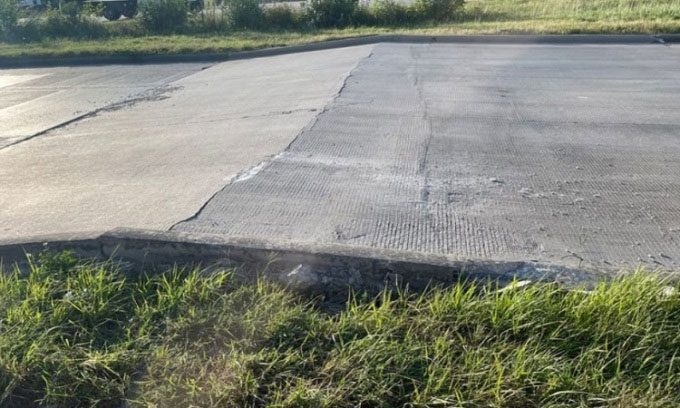Roads, bridges, and railways designed to 20th-century standards are buckling or melting due to extreme global heat.
In July, record temperatures were reported across the southern United States, southern Europe, central China, and eastern Asia. The heatwave caused sporadic power outages in several countries and buckled roads in Utah, Louisiana, and Wisconsin. In Texas, a section of Interstate 10 in Houston and a six-lane highway south of the city cracked under temperatures exceeding 100 degrees Fahrenheit at the end of June.

A road in Houston buckled due to extreme heat. (Photo: Texas Department of Transportation)
Due to heat absorption by the road surface, asphalt, which is used on over 90% of U.S. roads, is beginning to melt and deform, creating potholes and rippling surfaces. This rugged terrain increases fuel consumption, emits more pollutants, and raises vehicle maintenance costs, according to Imad Al-Qadi, director of the Illinois Transportation Center at the University of Illinois Urbana-Champaign. On concrete highways, steel joints are designed to allow the road surface to expand and prevent cracking when temperatures rise excessively.
Buckling roads are relatively easy to detect and repair, but the effects of extreme heat on homes, pipelines, and electrical structures are less apparent. Extreme heat can gradually wear down buildings, leading to significant repair costs, according to Elaine Gallagher Adams, engineer and team lead for infrastructure solutions at the consulting firm Arcadis.
Sealants, adhesives, and other polymer-based bonding agents used for attaching pipes, windows, and structural joints are particularly susceptible to heat. When they crack, they can lead to water leaks. The temperatures that polymer sealants are exposed to can be much higher than the air temperature. For instance, if the outdoor temperature is 120 degrees Fahrenheit, some sun-exposed building surfaces may reach 180 degrees Fahrenheit. The temperature of the sealant is likely to fall somewhere between these two levels. Extreme heat also threatens metals and concrete materials used in construction.
In Phoenix, three weeks of temperatures above 110 degrees Fahrenheit caused steel plates and iron beams used in many construction projects in the area to expand, according to Reymundo Hernandez, representative of the union of masons and craftsmen in Region 3. This made it difficult for workers to place beams into concrete blocks and walls, leading to subsequent issues. “When you place beams into concrete, the heat causes the structure to expand and cracks to appear in the walls,” Hernandez explained. Due to the extreme heat, some masons had to pour buckets of ice into the concrete and mortar to stabilize the material. They also had to schedule concrete pours at night when temperatures dropped below 95 degrees Fahrenheit, according to Matt Gilliland, risk manager at Willmeng Construction in Phoenix.
Architects note that glass and steel skyscrapers dominate many urban areas, making them particularly ill-suited to withstand rising global temperatures. They often have poor insulation, requiring large cooling systems that need upgrading as outdoor temperatures rise. Glass-clad buildings also reflect sunlight, contributing to the urban heat island effect, a phenomenon where buildings, roads, and other surfaces absorb and re-radiate heat from the sun. Cities become “heat islands” with higher temperatures compared to the surrounding green areas.
To keep air conditioning systems functioning during extreme heat events in the future, researchers say these systems will need to be more energy-efficient. Summer cooling demands are projected to increase by 13% in the U.S. if the global average temperature rises by 2 degrees Celsius, according to a research group at the University of Maryland and Purdue University.
Without improvements in cooling technology, many households in the U.S. could face 14 days without air conditioning due to power outages during hotter summers. During the heatwave of 2021 in British Columbia, more than 400 transformers failed, affecting the cooling systems of homes, businesses, and research institutes across the province, according to a report by the Canadian Climate Institute, a non-profit research organization.
Adapting to climate change is forcing businesses, infrastructure, and property owners to make difficult and costly choices, according to George Karagiannis, an expert on engineering and infrastructure at the Resilience First network in London. A recent study found that increasing extreme heat in the UK and Europe could drive road and rail operation and maintenance costs up to $5.4 billion by 2100, depending on the level of atmospheric warming.


















































